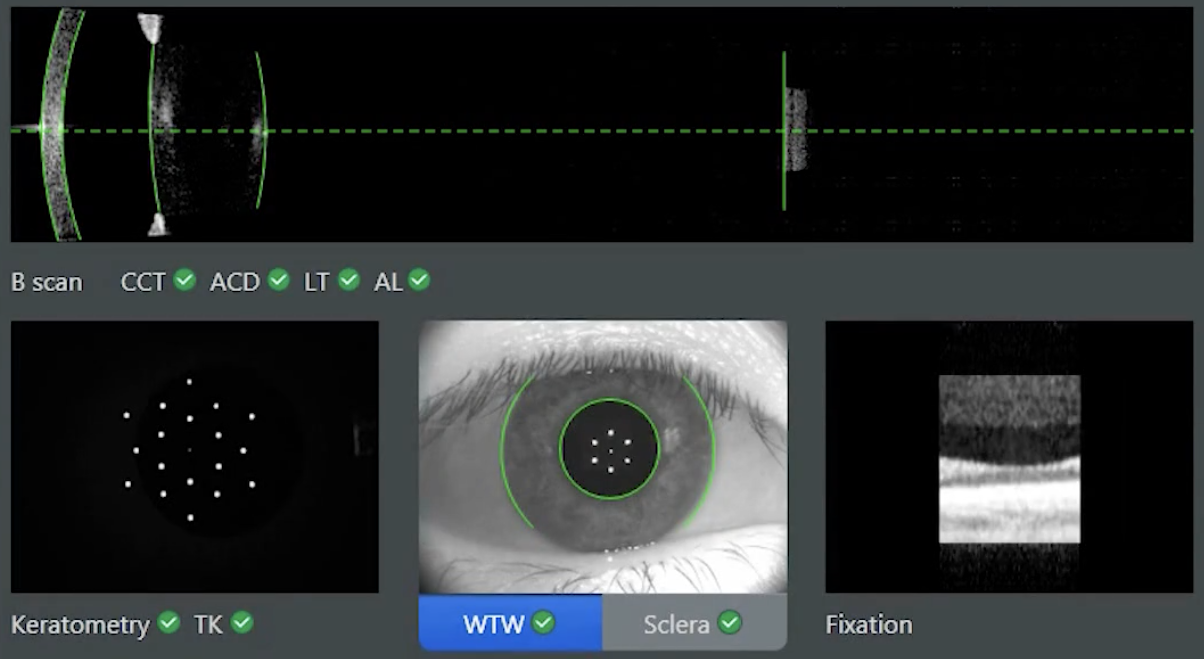 |
|
In accordance with other research, this study found that axial length is the most significant predictor of myopia level. Photo: Carl Zeiss Meditec. Click image to enlarge. |
A new study investigated the association of corneal and lenticular parameters with refractive error and other ocular parameters in children with myopia. Among its findings was that axial length appeared to be the most significant determinant of spherical equivalent refractive error. Additionally, decreases in both corneal and crystalline lens power showed an inverse correlation with axial elongation.
A total of 119 myopic Chinese children participated in the cross-sectional study. The researchers measured biometric parameters—including axial length, anterior chamber depth, central corneal thickness, lens thickness and horizontal and vertical corneal power—using the IOLMaster 700 biometry device. Swept-source OCT images and customized software were then used to evaluate corneal and lenticular curvature radii.
The researchers noted a few sex-related differences in the data. They reported, “Boys had a deeper anterior chamber and longer axial length than girls, while girls had steeper anterior corneal and lenticular curvatures and greater corneal and lenticular power.” The age of participants also seemed to play a role in certain parameters, one example being children 10 and older who showed a larger anterior lenticular radius of curvature and less lenticular power than their younger peers.
Independent of sex or age, the researchers also observed a positive correlation between axial length and the anterior corneal radius of curvature.
“A longer axial length was independently associated with older age, boys and a high degree of myopia,” the researchers wrote in their paper. “In contrast, there was no significant correlation between spherical equivalent and the corneal or lenticular parameters.”
The researchers concluded that their measurement technique and simulation of the corneal and lenticular curvature radii allowed for effective evaluation of corneal shape and refractive power in young myopic patients. “In the present study, high-resolution, cross-sectional images of the anterior eye segment enabled the direct measurement of the anterior and posterior corneal radii of curvature,” they wrote.
Wang Y, Liu Y, Zhu X, et al. Corneal and lenticular biometry in Chinese children with myopia. Clinical and Experimental Optometry. August 31, 2022. [Epub ahead of print]. |

